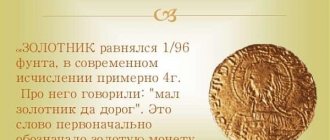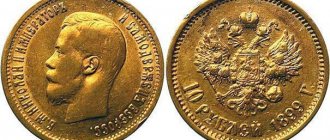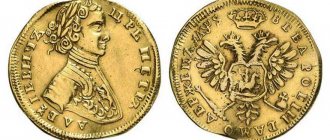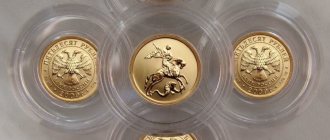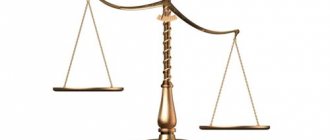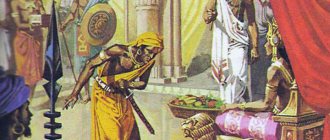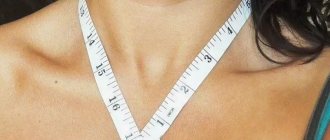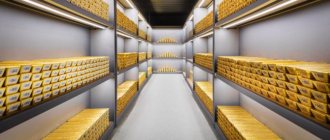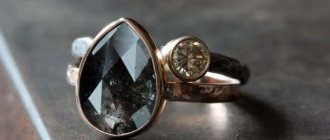Post updated: Jul 19, 2020
Numismatists have their own definitions of the value of certain coins. It is often not clear to an ordinary person why the price does not correspond to the one he independently calculated. In fact, the weight of gold in a coin is divided into the total and the pure precious metal contained in it, and the difference between them is called a coin foot.
The mass of gold in a coin is called a corn (translated from German as grain). Moreover, this definition is used not only in relation to gold, but also to any other precious metal, for example, silver. Korn is used to calculate the price of coins in cases of containing impurities of other metals.
In other cases, the value of a coin is calculated by its total weight. But most often it turns out that there is a significant difference between the net and total weight.
History of coin units
A silver or gold coin of the tsarist era often has a weight measure that is not quite familiar to modern times in the form of “3 spools and seventy-eight shares” or “one spool and 56 shares.” And on banknotes of the late 19th and early 20th centuries there was an inscription: “1 ruble is equal to 17.424 shares of pure gold.” They began to measure gold and other precious metals in grams only closer to the twenties of the last century, and before that slightly different measures of measurement were in use.
Copper
5 kopecks 1802 (Hermitage exhibition)
Copper coins - pulas - were made in Novgorod and Tver back in the 15th century; they were small and had an irregular shape, just like silver coins of that time. It is still unknown exactly in what ratio they were equated to silver; there are different opinions: from 20/1 to 150/1. With the unification of Rus', local types of coins disappeared, and with them the pools. Copper monetary circulation was revived under Tsar Alexei Mikhailovich, when they tried to equalize coins made of silver and copper that were identical in size and weight. This caused a strong drop in the exchange rate of copper coins and the famous “Copper Riot”; the idea had to be abandoned. Since 1700, the first full-fledged copper coins of a round shape were issued, which, compared with the silver “scales” that circulated in parallel with them, were significantly ahead of their time. The high quality of copper coins made it possible to partially introduce copper into circulation and replace scarce silver with it.
For more than 200 years, copper coins served as change, the denominations were low: from half a half to 5 kopecks (sometimes a coin with a denomination of 10 kopecks was produced). In 1924, when the Soviet ruble finally strengthened, copper coins in denominations of 1, 2, 3 and 5 kopecks (since 1925 - half a kopeck) came into circulation, but within two years they began to be replaced by more durable and cheaper bronze ones. In the modern history of Russia, a copper coin was also issued - 5 rubles of the 1997 model, which had a copper base and plating made of cupronickel alloy. Since 2009, they have been replaced by coins with a steel base, but copper ones can still often be found in circulation.
| Parameter | Meaning |
| Color | Golden pink |
| Chemical designation | Cu |
| Melting temperature | 1083.55°C |
| Density | 8.92 g/cm3 |
| Mohs hardness scale | 3 |
Old Russian types of units of measurement
From 1747 to 1920, all units of measurement could be equated to the Russian pound. One Russian pound meant a mass equal to 0.4095124 kg (409.5124 g). At the moment, you can find information about many other types of feet, such as Austrian, Venetian, French and others, the values of which are very different from the Russian pound.
Chervonets
1 chervonets was equal to one spool and its 78.24 share was pure gold.
If we were talking about large volumes of precious metals or other materials, their weight was measured in a unit of measurement such as a pound. One pood is equal to forty pounds. The heaviest copper coin of the time of the Russian Empire was one ruble from 1725 - its weight was a tenth of a pood, that is, a little more than 1.6 kg. Gold in coins was measured in even smaller units: spool, lot and share.
The very concept of “zolotnik” most likely comes from the gold coin “zolotnik”, which was in circulation in Kievan Rus. Zolotnik (“zlatnik”) was a small gold coin. One pound was equal to ninety-six spools, and one spool was equal to 96 shares. Such a division into 96 parts shows the influence (although not the most obvious) of the sixfold number system that existed in ancient times, which influenced the measurement of length, time and some others.
Soviet chervonets 1923.
The term “spool” was also used to determine the purity of gold. For example, if a 1-spool coin contained a pure gold weight of 75 parts of 21 parts of the total alloy, then the coin was considered to be made from 75-carat gold or "75-spool gold." Nowadays, the sample of precious metals is displayed in ppm (this is the value of the part of pure metal per one thousand parts of the alloy). Because of this, various old gold items are of low purity.
Zolotnik of Kievan Rus.
The fraction was the smallest unit of mass measurement and was equal to 1/96 of the spool, otherwise 44.435 mg (0.044435 g). The lot was used in the second half of the 18th - early 20th centuries and was equal to 1/32 of a pound or three spools.
Old Russian measurement values were also used on gold chervonets, which were produced in 1923 and 1975-1982. The mass of pure gold in such a coin is one spool and 78 shares.
One troy ounce bar.
Based on the presented data, the ratio of the old Russian values of the weight measure can be represented as:
- One pood is equal to forty pounds and is equal to 16380.496 grams;
- One pound is equal to thirty-two lots or ninety-six spools or 9216 shares and 409.5124 grams;
- One lot is equal to three spools or 288 shares or 12.79728 grams;
- One spool is equal to ninety-six shares = 4.26576 grams;
- One fraction is equal to 0.044435 grams;
Links[edit]
- "Gold Coins - A Brief History".
- "Money Episodes from History".
- ^ ab "The Million Dollar Coin is a True Milestone in Minting". Royal Canadian Mint
. Archived from the original on January 25, 2015. Retrieved January 25, 2015. - https://www.theguardian.com/world/2017/mar/27/giant-gold-coin-with-queens-head-stolen-from-berlin-museum
- ^ ab "Investment gold coins".
- "The World's Largest Gold Coin". Perth Mint, Australia
. Archived from the original on January 25, 2015. Retrieved January 25, 2015. - ^ ab "Information on Coin Characteristics". Archived from the original on April 10, 2010.
- "Coin Grading Standards".
- Sheldon, William H. (1990). Penny Quirks
. Sanford S. Durst. ISBN 0-942666-62-3. - YEOMAN, R. S. (2009). Guide to United States Coins
(63rd ed.). Whitman Publishing. ISBN 978-0-7948-2766-3. - "Grading Standards". Retrieved October 1, 2010.
- "Coin Grading Services".
- "Scales of Rarity". "Rarity System". Archived from the original on August 5, 2009. Retrieved June 3, 2010.
- Manas, Arnaud (2015). “Music of Gold: Is it possible to detect counterfeit gold coins by ear?” . European Journal of Physics
.
36
(4): 045012. DOI: 10.1088/0143-0807/36/4/045012. - ^ ab Gray, Theo (14 March 2008). "How to Make Convincing Fake Gold Bars". Popular Science. Archived from the original on January 25, 2015. Retrieved June 18, 2008.
- "Detecting Counterfeit Coins".
- "Fake gold coins and bars". Archived from the original on January 29, 2013.
- Sargent, Mike. "Indian Head Quarter Eagles: King of the Counterfeit Gold Coin Series" (PDF).
- Lafleur, Merlin. "Fake tungsten gold bars are fake".
- ^ ab Herb Weisbaum 2016. Glitters, but not gold: The “flood” of the market for counterfeit gold and silver coins. nbcnews JUNE 13, 2016, https://www.nbcnews.com/business/business-news/glitters-not-gold-fake-gold-silver-coins-flooding-market-n591201
- https://www.youtube.com/watch?v=-jy-_HnjroY&t=610s
- https://www.youtube.com/watch?v=SgPOPozHRow
- ^ B s d e g manas, Arnaud (2017). “Why do pirates bite the gold coins they are given? (PDF download available).” ResearchGate
. DOI: 10.13140/rg.2.2.27019.08487. - ^ abc Melonice McAfee. Why Olympians Bite Their Medals at the Wayback Machine (archived April 16, 2022) CNN, August 10, 2012
- Roberts, John. "Saint-Gaudens Double Eagle 1907". ANACS
. Archived from the original on February 4, 2016. - “How do you know if gold is real or fake?” .
Modern unit of measurement of the mass of precious metals
From 1977 to the present day, various commemorative and commemorative coins have been issued from different types of precious metals.
They are minted weighing one troy ounce, or 31.1034768 grams. This name comes from the French city (Troyes).
This value is now used in the banking and jewelry industries when measuring precious metals, as well as in other areas, such as cosmetology, where the troy ounce denotes the weight of some very valuable components. Around the world, the troy ounce, gold, silver, platinum and palladium are denoted by the following abbreviations: XAU, XAG, XPT, XPD. The mass of larger coins (more than 1 kg) is measured in grams.
What is 1 spool equal to?
Under the conditions of the old Russian system of measuring weights for jewelry metals, one spool had the following analogues:
- 0.0006 Berkovites;
- 0.00026 pounds;
- 0.01 lb;
- 0.33 lots;
- 96 shares.
The modern metric system uses different ratios. According to them, one spool is equal to:
- 4.265 g;
- 0.004266 kg;
- 4.27 x 10-9 kilotons;
- 4.27 x 10-6 tons;
- 4.27 x 10-5 quintals;
- 0.04 newton;
- 21.33 carats;
- 4265.75 mg;
- 4265750 mcg.
In Tsarist Russia, other measures of weight for large volumes of things were also used. The three most common were:
- A pound is the largest measure in terms of value (only Berkovites were higher than it, but they were not used in everyday life), equal to 40 pounds;
- The pound consisted of 32 lots, and could also be translated as 96 spools;
- Lot – a measure of weight equal to 3 spools.
If today these terms can be found exclusively in numismatist catalogs, then in Tsarist Russia they were used everywhere. This is due to the fact that the concepts were familiar both to merchants and jewelers, and to the common people. They are also found in documentary sources of that time. Thanks to the latter, it was possible to determine the proportions and weight of the gold-containing coin as accurately as possible.
Platinum
Platinum coin with a face value of 12 rubles (Hermitage exhibition)
At the end of the reign of Alexander I, significant deposits of a metal unknown at that time - platinum - were found in the Urals. With the coming to power of Nicholas I, the minting of platinum coins in special denominations was organized: 3, 6 and 12 rubles. The fact is that, to save money, the same equipment and presses were used in the manufacture of circles as in the manufacture of silver blanks. The estimated cost of platinum was 12 times higher than silver, and its density was 2 times higher. Therefore, 12 rubles had the size of 1 ruble, 6 rubles 50 kopecks, and 3 rubles 25 kopecks. Coins were produced en masse in 1828-1845, but again counterfeiters, who used ordinary silver as a raw material, became an obstacle. Moreover, there were cases of fraud when regular silver coins were issued instead of platinum coins (it was easy to confuse them in the dark). After the end of the issue, all the platinum stored in the treasury and the coins that were collected from the population were sold to England.
The revival of platinum coinage occurred already in Soviet times; these were collector's issues of improved quality, dedicated to various events. Production was discontinued in 1995.
| Parameter | Meaning |
| Color | Steel gray |
| Chemical designation | Pt |
| Melting temperature | 1769°C |
| Density | 21.5 g/cm3 |
| Mohs hardness scale | 4,3 |
Bronze
Bronze replaced the more expensive copper in Soviet-era currency. Another advantage of bronze is its higher resistance to aggressive environments. Bronze contains a large part of copper (up to 90%) and other metals (tin, aluminum, beryllium, silicon, lead). Depending on the metal it contains, bronze is called tin (or simply bronze), aluminum, etc. Bronze has a reddish-golden color, more yellow than pure copper. It quickly fades when exposed to air, forming a protective film that prevents further oxidation. The first bronze coins came out in 1926, using aluminum bronze. After 1957, the use of bronze in coin production ceased, and was replaced by a copper-zinc alloy. Since the 1990s, bronze has been used to make rings or inserts for bimetallic coins.
| Parameter | Meaning |
| Color | Golden yellow |
| Alloy composition | 75-90% copper, 10-25% tin (or aluminum, silicon, beryllium, lead) |
| Chemical designation | CuSn, CuAl, CuSi, CuBe, CuPb |
| Melting temperature | 930—1140° C |
| Density | 7.5-8.8 g/cm3 |
| Mohs hardness scale | 2,5-3 |
Steel
5 rubles 2016
The cheapest material used in the production of coins. Since the early 90s, low denomination coins (1 and 5 rubles) have been minted from it, and since 1997, 1 and 5 kopecks. In 2006, 10 and 50 kopecks began to be made from coated steel instead of using expensive brass, and since 2009, 1, 2 and 5 rubles. In the same year, a steel 10-ruble coin with a brass coating came into circulation, and since 2022, even bimetallic coins began to be made on steel blanks coated with metals of two colors. Despite the cheapness of the metal, minting 1 and 5 kopecks became unprofitable, and since 2015 it was necessary to abandon 10 and 50 kopecks. The metal is very hard, which leads to rapid wear of the stamps, and therefore modern coins have a high percentage of defects in the form of unminted or split stamps.
| Parameter | Meaning |
| Color | Grey |
| Alloy composition | iron + carbon (up to 2 percent) |
| Chemical designation | FeC |
| Melting temperature | 1450—1520° C |
| Density | 7.7—7.9 g/cm3 |
| Mohs hardness scale | 5-8,5 |
Tompak alloy
Since 2006, tombak alloy has been used to cover ten- and 50-kopeck steel coins, the minting of which ceased in 2015. The alloy is considered higher quality and more expensive than bronze; cutlery, dishes, and interior items are made from it. However, as time has shown, on coins it quickly darkens and loses its beautiful golden color.
| Parameter | Meaning |
| Color | Golden yellow |
| Alloy composition | 88-97% copper and up to 10% zinc |
| Chemical designation | CuZn |
| Melting temperature | 880—950° C |
| Density | 8.3—8.7 g/cm3 |
| Mohs hardness scale | 3,5-4 |
